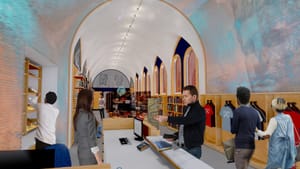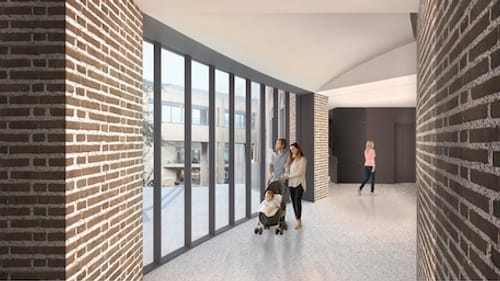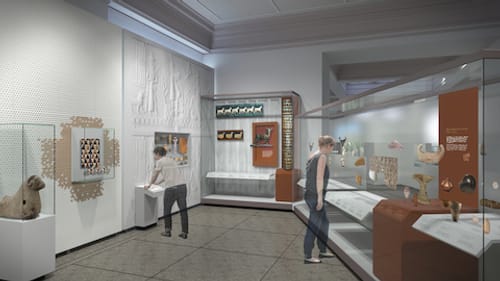Stay in the Loop
BSR publishes on a weekly schedule, with an email newsletter every Wednesday and Thursday morning. There’s no paywall, and subscribing is always free.
When they build it, will you come?
Penn Museum's "Building Transformation" project

Having grown up in Chicago, I have fond memories of classroom and family trips to the Field Museum of Natural History, the DuSable Museum of African American History, the Museum of Science and Industry, and the Art Institute of Chicago (among so many others). These experiences left me wanting more, so when I decided on a career path after college, I knew I wanted it to be connected to arts and culture.
Since moving to Philadelphia nearly seven years ago, I’ve taken in arts and culture events in a wide variety of settings, from the Philadelphia Museum of Art, Franklin Institute, and Mütter Museum to the house museums up in Germantown. I discovered that the arts and culture events I enjoyed the most were situated in inviting and relaxed spaces where I felt welcome.
I’ve lived in southwest Philly for close to two years, and have developed a bit of a love-hate relationship with all things University of Pennsylvania. Before attending the November 1, 2017, kickoff event to hear about its “Building Transformation” capital campaign and construction project, I had never entered the University of Pennsylvania Museum of Archaeology and Anthropology, better known as the Penn Museum, mainly because I was intimidated by its stately yet imposing exterior.
As I listened to remarks by museum and university officials, watched their “Building Transformation” promotional video, walked through the museum's spaces, and talked to staff, I was impressed by the institution’s plans to reconfigure nearly 75 percent of its signature gallery spaces to make them more accessible, engaging, and user-friendly for a wider cross-section of visitors.
Existing programs such as “Unpacking the Past” will get a makeover as well, adding new Mesopotamian instructional content for middle-school students and teachers in Greater Philadelphia’s Title I schools that will be connected to the museum's new Middle East Galleries. While the galleries are being renovated, groups and individuals will still be able to access the museum’s collections and research through its virtual programs and workshops. The newly created “Global Guides Immigrant Stories Tour Program” will hire and train area immigrants and refugees to be tour guides when the museum galleries reopen in 2018 and 2019.
Art among the mummies
All of these ambitious changes will be made in service to its vision and mission “to be the place where people experience the thrill of discovery and gain a deeper understanding of human history and their place in it.”

However, I’ve heard (and been part of constructing) this narrative before: venerable arts and culture institution announces a multiyear capital campaign to underwrite the launch or continuation of an ambitious construction or renovation project that will dramatically remake its space. This, in turn, will drive the institution’s new and improved outreach and engagement plans. Those plans will hopefully lead to the capture of a larger market share of underserved audiences, and all will be right in the world.
However, will more members of Philadelphia’s underserved and disenfranchised communities flock to the Penn Museum after this project is completed? Of course they might, but will they be motivated and inspired to come back again and again after the shine of renovations wears off? More elevators, fully air-conditioned spaces, more comfortable seating, and interactive exhibits add tremendous value to a visitor’s experience, no doubt, but I can tell you that these will not be the features that will motivate those like me to visit more than once.
Here’s what will: creating dynamic opportunities for a diverse cross-section of individuals to co-create fresh content. Allowing the public to reimagine how communities could engage with the museum’s spaces and collections going forward. Wouldn’t it be interesting hear from some of Philadelphia’s visual artists, poets, and storytellers as they reimagine an object of their choice from the museum’s collections? While the galleries are offline, let them use the lens of their own experiences to make discoveries while researching the museum’s archives. Pair an artist’s interpretation of an object with the standard curatorial interpretation once the galleries reopen.

Create a #PennMuseumTransforms campaign. Wouldn’t it be fun to invite a diverse group of social-media influencers to create real-time content about the transformation and its key players? Perhaps a local performance artist could create a work or an experience that reimagines how audiences might engage with the entrance hall or the museum’s imposing exterior.
Back to the future
The time is well overdue for arts and cultural institutions to critically reexamine the notion that dramatic and costly redesigns of their physical spaces can be the primary driver of community/audience engagement and retention. It won’t be enough for Penn Museum and institutions like it to merely view its audiences as passive content consumers.
The very survival of arts and cultural institutions like Penn Museum dictates that they be open to new and unconventional audience-engagement methods. It doesn’t mean throwing out the engagement playbook and writing a completely new one. However, there should be a genuine curiosity and willingness to question what has worked in the past, along with an interest in creatively reimagining its relationship to and with audiences going forward.
I hope the Penn Museum will be able to leverage this ambitious redesign project in a way that not only transforms its physical spaces, but truly transforms the ways in which it builds and sustains its relationships with, and to, community.
What, When, Where
University of Pennsylvania Museum of Archaology and Anthropology, 3620 South Street, Philadelphia. (215) 898-4000 or penn.museum.
Sign up for our newsletter
All of the week's new articles, all in one place. Sign up for the free weekly BSR newsletters, and don't miss a conversation.

 Tieshka Smith
Tieshka Smith